This article was co-authored by Payam Daneshrad, MD. Dr. Payam Daneshrad is a board certified Otolaryngologist, a board eligible Facial Plastic Surgeon, and the Owner and Director of Daneshrad Clinic in Los Angeles, California. With over 19 years of experience, Dr. Daneshrad specializes in adult and pediatric Otolaryngology-head and neck surgery, packing-less nasal surgery, minimally invasive sinus surgery, and snoring treatment. He also uses the newest surgical ENT techniques for tonsillectomy, adenoidectomy, thyroidectomy, and parathyroidectomy. Dr. Daneshrad graduated with a BS and the highest honors from the University of California, Berkeley. He earned his Doctor of Medicine (MD) from Tulane University School of Medicine, where he was accepted into the AOA, the medical honor's society, and the Tulane University School of Public Health. Dr. Daneshrad received his medical training from the University of Southern California, where he currently serves as an Associate Clinical Professor. Dr. Daneshrad is the Otolaryngologist and Facial Plastic Surgeon for the Los Angeles Sparks and the athletic teams of Loyola Marymount University.
This article has been viewed 55,099 times.
Ear wax is a naturally occurring substance that can help protect your baby’s ears from harm. While a certain amount of wax is normal and healthy, excess ear wax can cause irritation, trouble hearing, and infection. Consult your baby’s doctor and use ear drops to remove wax build-up in your baby’s inner ear, and/or use a clean washcloth to gently wipe away excess wax from the outer ear.
Steps
Using Inner Ear Wax Removal Eardrops
-
1Check your baby’s ears for excessive wax build-up. Look into your baby’s ears to check for signs of wax build-up and infection, including partial or full wax blockage of the ear canal, dripping, and/or a yellowish or brownish tint to the wax. While some ear wax is not only normal but healthy for your baby’s ears, excessive build-up can impact your baby’s hearing, trap water in the ear canal, and cause infection.[1]
- Keep an eye out for additional signs that your baby may have excessive wax build-up or an infection, such as slow responses due to trouble hearing or frequent rubbing or tugging at their ears.
-
2Consult your baby’s doctor. If you think your baby has excessive ear wax build-up in their inner ear, take them to see your pediatrician. If your pediatrician determines that your baby’s ear wax needs to be removed, they will likely give you a prescription for wax removal eardrops, or recommend an over-the-counter brand.[2]
- Always consult your baby’s doctor before trying to remove any ear wax on your own. Your doctor can let you know for sure whether your baby’s ear wax needs to be removed, and how best you can do so without risking harm to your baby’s ears.
- Ear wax usually doesn't need to be removed unless there is a problem. The human body naturally moves wax out of the ears on its own.[3]
- If there is a lot of stubborn build-up, your pediatrician may use a tool called a curette to scrape out the ear wax. Don’t worry – this process is relatively gentle and, in most cases, will not bother your baby at all.
Advertisement -
3Pick up baby wax removal eardrops at the pharmacy. If your pediatrician has determined that your baby’s ear wax needs to be removed, go to your local pharmacy to fill the prescription for eardrops. If you did not get a prescription, select the over-the-counter brand recommend by your baby’s doctor. Make sure that you pick up the exact medication recommended by your pediatrician to ensure that you get the right eardrops to treat your baby’s specific symptoms.
- Using the wrong drops could cause minor irritation.
-
4Lie your baby on their side. To administer the eardrops, first lie your baby on their side with the unaffected ear facing down and the blocked or infected ear facing up. You may need another person to help you administer the drops and safely elevate your baby’s head to avoid putting pressure on the blocked or infected ear.[4]
- If possible, try to do this when your baby is calm. The drops will need to sit in your baby’s ears for several minutes, which can be difficult if your baby is agitated.
-
5Fill the dropper according to your doctor’s instructions. Before administering the drops, read your doctor’s instructions. Remove the dropper from the bottle and squeeze out the air by squeezing the rubber top. Then, insert the dropper into the medication and slowly release the rubber top to draw the medicine inside. Let the dropper fill up with the appropriate amount of liquid, then remove the dropper from the bottle.
- If the dropper is over-filled, gently squeeze the rubber top over the bottle to release some of the liquid back into the bottle.
- Your doctor may specify how much medication your baby will need, or they may recommend that you follow the instructions on the prescription or over-the-counter eardrop bottle.
-
6Place the eardrops in your baby’s ear one drop at a time. Hold the dropper over your baby’s ear canal and pinch the rubber top gently to release a drop of medication into your baby’s inner ear. Repeat this until you have administered the amount of medication recommended by your doctor.
- Never stick the dropper in your baby’s ear. If you accidentally drip the medication on the side of the ear canal rather than right inside, don’t worry – it will likely slide inside while you wait for the liquid to settle.
-
7Keep your baby on their side for 5 to 10 minutes. This will give the eardrops time to soften the wax, helping it come out on its own. If your baby starts getting restless, try to entertain them long enough for the drops to settle into the ear canal and loosen the excessive ear wax build-up.[5]
-
8Let the excess liquid drip onto a tissue. After letting the medication settle in your baby’s ear, prop your baby upright and hold a clean, soft tissue against their cheek, right under their earlobe. Let the excess liquid drip onto the tissue.[6]
- If there is residual liquid that has dripped onto your baby’s outer ear, you can wipe it away gently with a clean tissue.
-
9Wait about 10 minutes before repeating on the other ear (if needed). This will give the eardrops a bit more time to settle into your baby’s ear once your baby is upright. Your baby will also get some much-needed time to move around before having to stay still for another round of eardrops. After about 10 minutes, you can feel free to repeat this process and administer drops into your baby’s other ear.
-
10Repeat as directed by your pediatrician. Check your baby’s doctor’s directions to see how often you need to administer the drops into your baby’s ear canal. Repeat this process accordingly.
- If your baby shows any signs of irritation (such as rash, excessive rubbing, tugging or scratching on their ears, or painful crying or screaming), contact your pediatrician immediately.
Removing Outer Ear Wax Build-Up
-
1Wet a clean, soft washcloth with warm water. Turn on both the cold and hot water in the sink or bathtub. Let the water run for a few seconds, adjusting the hot and cold until the water reaches a lukewarm temperature that will be comfortable for your baby. Then, take a clean, soft washcloth and stick it under the running water until it is completely dampened. Twist the washcloth to remove any excess water.
- Make sure that the water is not too hot, as this can be harmful to your baby’s skin.
- You may want to twist the washcloth twice to make sure that it doesn’t drip any water into your baby’s ear canal.
-
2Wipe behind and around both of your baby’s outer ears. Use the lukewarm washcloth to gently wipe away any ear wax build-up behind your baby’s ears. Then, use another section of the washcloth to wipe away any wax along the outer part of your baby’s earlobe. Repeat this process for the other ear as well.[7]
- Do not put the washcloth inside your baby’s ear.[8] Doing so could damage your baby’s eardrum or cause water to drip into the ear canal.
-
3Repeat this process as needed to keep your baby’s ears clean. You can clean your baby’s outer ear on a daily basis, or whenever you notice any excess wax build-up. Keep in mind that some wax build-up is normal and healthy, so you only really need to clean your baby’s ears when you notice an excess.[9]
Expert Q&A
Did you know you can get expert answers for this article?
Unlock expert answers by supporting wikiHow
-
QuestionDo you have to clean wax out a baby's ears?
 Payam Daneshrad, MDDr. Payam Daneshrad is a board certified Otolaryngologist, a board eligible Facial Plastic Surgeon, and the Owner and Director of Daneshrad Clinic in Los Angeles, California. With over 19 years of experience, Dr. Daneshrad specializes in adult and pediatric Otolaryngology-head and neck surgery, packing-less nasal surgery, minimally invasive sinus surgery, and snoring treatment. He also uses the newest surgical ENT techniques for tonsillectomy, adenoidectomy, thyroidectomy, and parathyroidectomy. Dr. Daneshrad graduated with a BS and the highest honors from the University of California, Berkeley. He earned his Doctor of Medicine (MD) from Tulane University School of Medicine, where he was accepted into the AOA, the medical honor's society, and the Tulane University School of Public Health. Dr. Daneshrad received his medical training from the University of Southern California, where he currently serves as an Associate Clinical Professor. Dr. Daneshrad is the Otolaryngologist and Facial Plastic Surgeon for the Los Angeles Sparks and the athletic teams of Loyola Marymount University.
Payam Daneshrad, MDDr. Payam Daneshrad is a board certified Otolaryngologist, a board eligible Facial Plastic Surgeon, and the Owner and Director of Daneshrad Clinic in Los Angeles, California. With over 19 years of experience, Dr. Daneshrad specializes in adult and pediatric Otolaryngology-head and neck surgery, packing-less nasal surgery, minimally invasive sinus surgery, and snoring treatment. He also uses the newest surgical ENT techniques for tonsillectomy, adenoidectomy, thyroidectomy, and parathyroidectomy. Dr. Daneshrad graduated with a BS and the highest honors from the University of California, Berkeley. He earned his Doctor of Medicine (MD) from Tulane University School of Medicine, where he was accepted into the AOA, the medical honor's society, and the Tulane University School of Public Health. Dr. Daneshrad received his medical training from the University of Southern California, where he currently serves as an Associate Clinical Professor. Dr. Daneshrad is the Otolaryngologist and Facial Plastic Surgeon for the Los Angeles Sparks and the athletic teams of Loyola Marymount University.
Board Certified Otolaryngologist
-
QuestionWhat's the best way to clean the outside of my baby's ears?
 Payam Daneshrad, MDDr. Payam Daneshrad is a board certified Otolaryngologist, a board eligible Facial Plastic Surgeon, and the Owner and Director of Daneshrad Clinic in Los Angeles, California. With over 19 years of experience, Dr. Daneshrad specializes in adult and pediatric Otolaryngology-head and neck surgery, packing-less nasal surgery, minimally invasive sinus surgery, and snoring treatment. He also uses the newest surgical ENT techniques for tonsillectomy, adenoidectomy, thyroidectomy, and parathyroidectomy. Dr. Daneshrad graduated with a BS and the highest honors from the University of California, Berkeley. He earned his Doctor of Medicine (MD) from Tulane University School of Medicine, where he was accepted into the AOA, the medical honor's society, and the Tulane University School of Public Health. Dr. Daneshrad received his medical training from the University of Southern California, where he currently serves as an Associate Clinical Professor. Dr. Daneshrad is the Otolaryngologist and Facial Plastic Surgeon for the Los Angeles Sparks and the athletic teams of Loyola Marymount University.
Payam Daneshrad, MDDr. Payam Daneshrad is a board certified Otolaryngologist, a board eligible Facial Plastic Surgeon, and the Owner and Director of Daneshrad Clinic in Los Angeles, California. With over 19 years of experience, Dr. Daneshrad specializes in adult and pediatric Otolaryngology-head and neck surgery, packing-less nasal surgery, minimally invasive sinus surgery, and snoring treatment. He also uses the newest surgical ENT techniques for tonsillectomy, adenoidectomy, thyroidectomy, and parathyroidectomy. Dr. Daneshrad graduated with a BS and the highest honors from the University of California, Berkeley. He earned his Doctor of Medicine (MD) from Tulane University School of Medicine, where he was accepted into the AOA, the medical honor's society, and the Tulane University School of Public Health. Dr. Daneshrad received his medical training from the University of Southern California, where he currently serves as an Associate Clinical Professor. Dr. Daneshrad is the Otolaryngologist and Facial Plastic Surgeon for the Los Angeles Sparks and the athletic teams of Loyola Marymount University.
Board Certified Otolaryngologist
Warnings
- Never put anything inside your baby’s ear, including a washcloth, cotton swab, or your finger. This can cause more wax build-up or, in extreme cases, can permanently damage your baby’s eardrums.[10]⧼thumbs_response⧽
- Always talk to your pediatrician before trying any wax removal technique on your baby’s ears. Your doctor can let you know for sure whether your baby’s ear wax needs to be removed, and how best you can do so without risking harm to your baby’s ears.⧼thumbs_response⧽
References
- ↑ https://www.babycenter.com/0_earwax-buildup_10871.bc
- ↑ https://kidshealth.org/en/parents/earwax.html#catschool
- ↑ Payam Daneshrad, MD. Board Certified Otolaryngologist. Expert Interview. 30 September 2020.
- ↑ https://www.seattlechildrens.org/conditions/a-z/earwax-buildup/
- ↑ https://www.seattlechildrens.org/conditions/a-z/earwax-buildup/
- ↑ https://www.seattlechildrens.org/conditions/a-z/earwax-buildup/
- ↑ https://kidshealth.org/en/parents/earwax.html#catschool
- ↑ Payam Daneshrad, MD. Board Certified Otolaryngologist. Expert Interview. 30 September 2020.
- ↑ https://www.aboutkidshealth.ca/article?contentid=1974&language=english
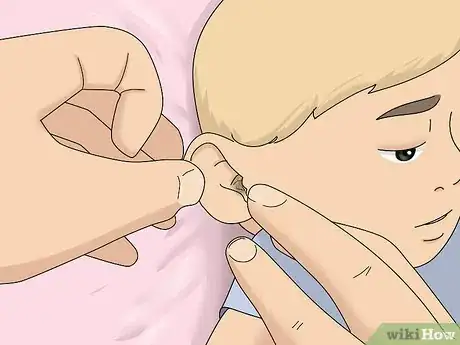
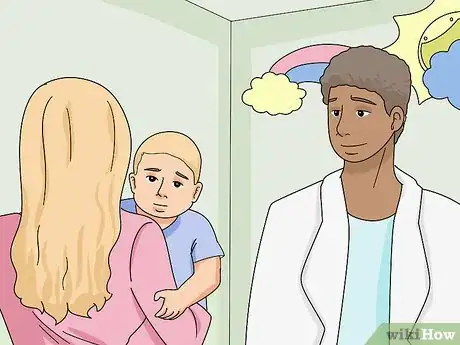

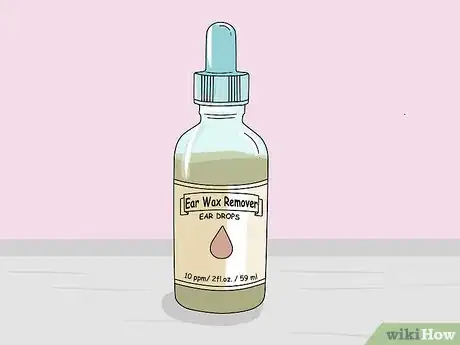
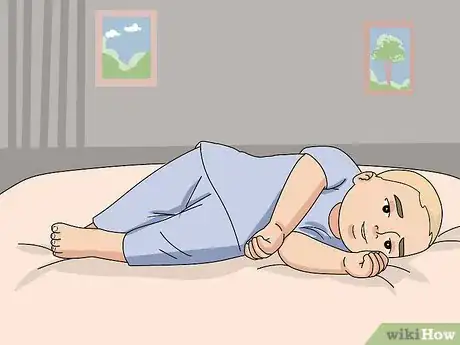
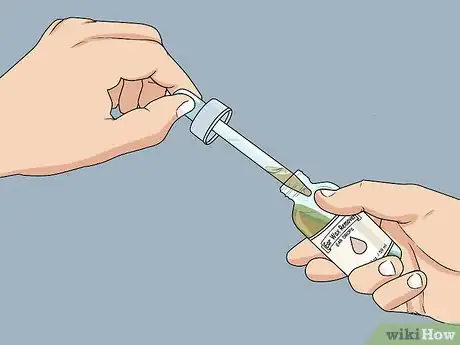
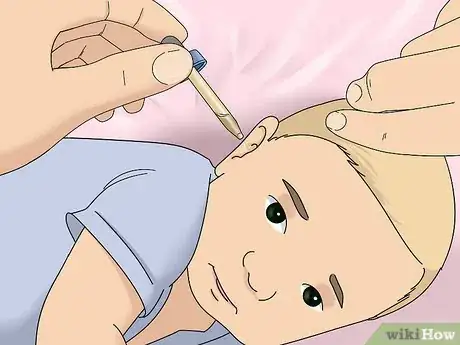
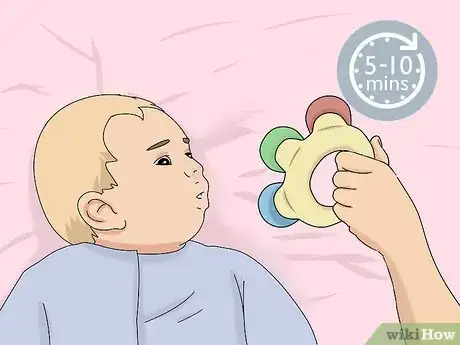
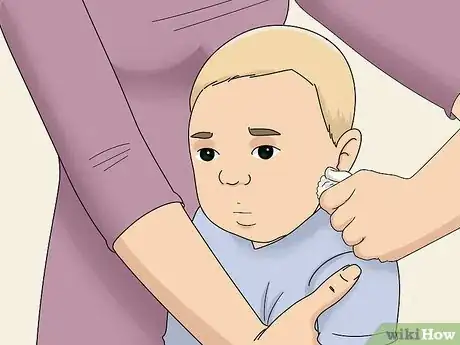
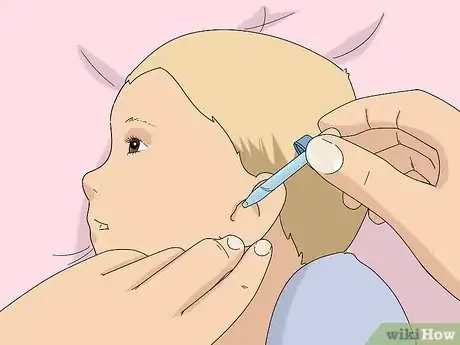

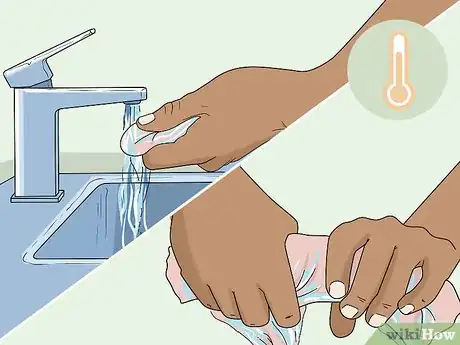
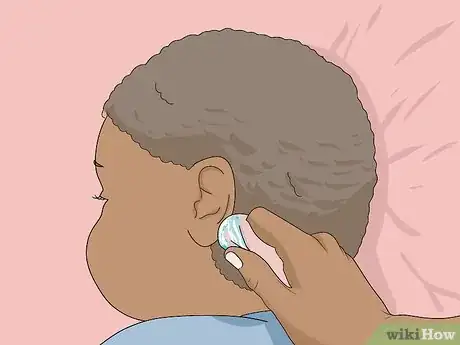



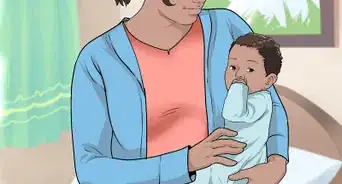
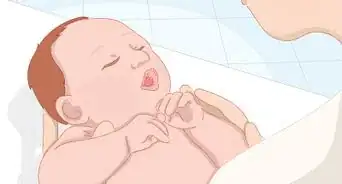

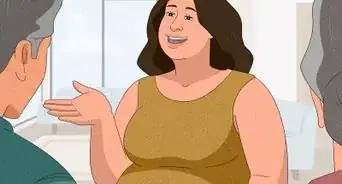

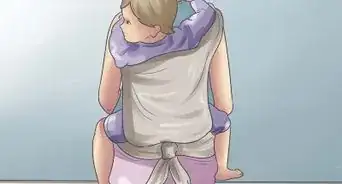

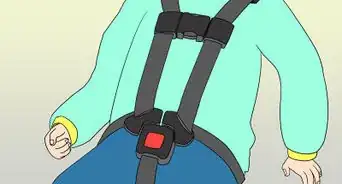

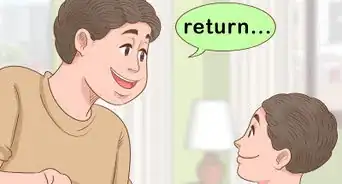
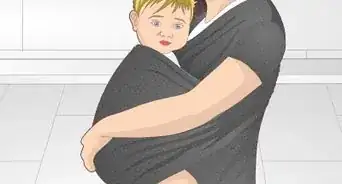









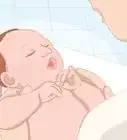




































Medical Disclaimer
The content of this article is not intended to be a substitute for professional medical advice, examination, diagnosis, or treatment. You should always contact your doctor or other qualified healthcare professional before starting, changing, or stopping any kind of health treatment.
Read More...